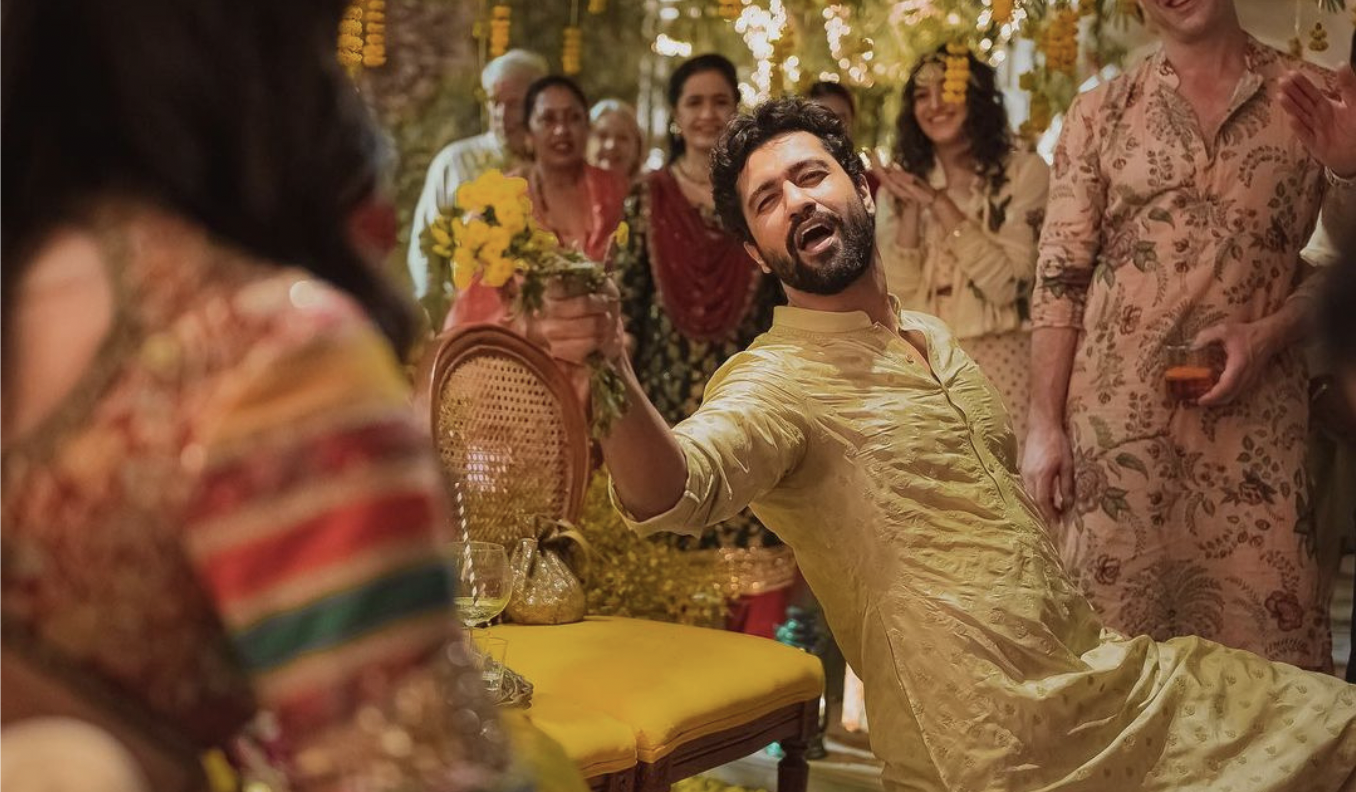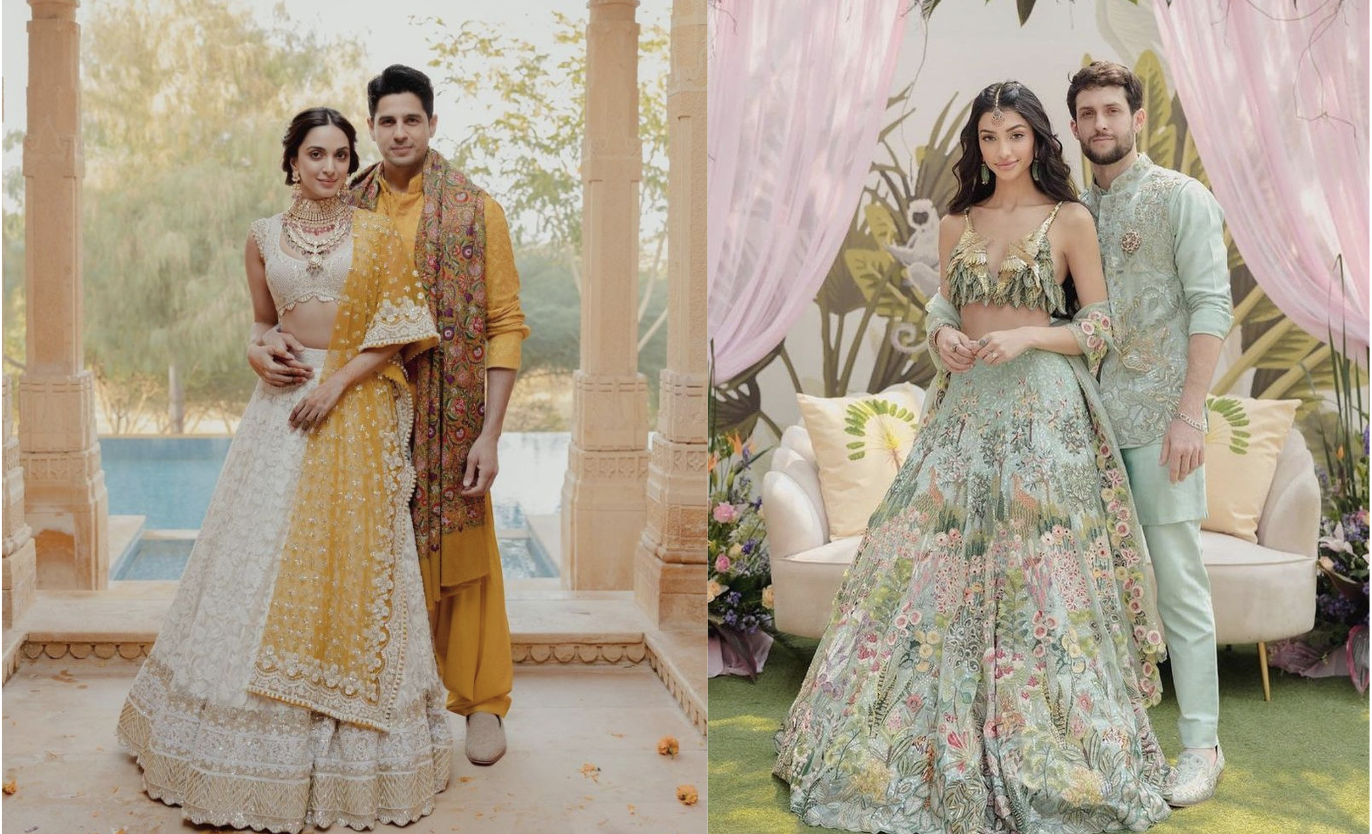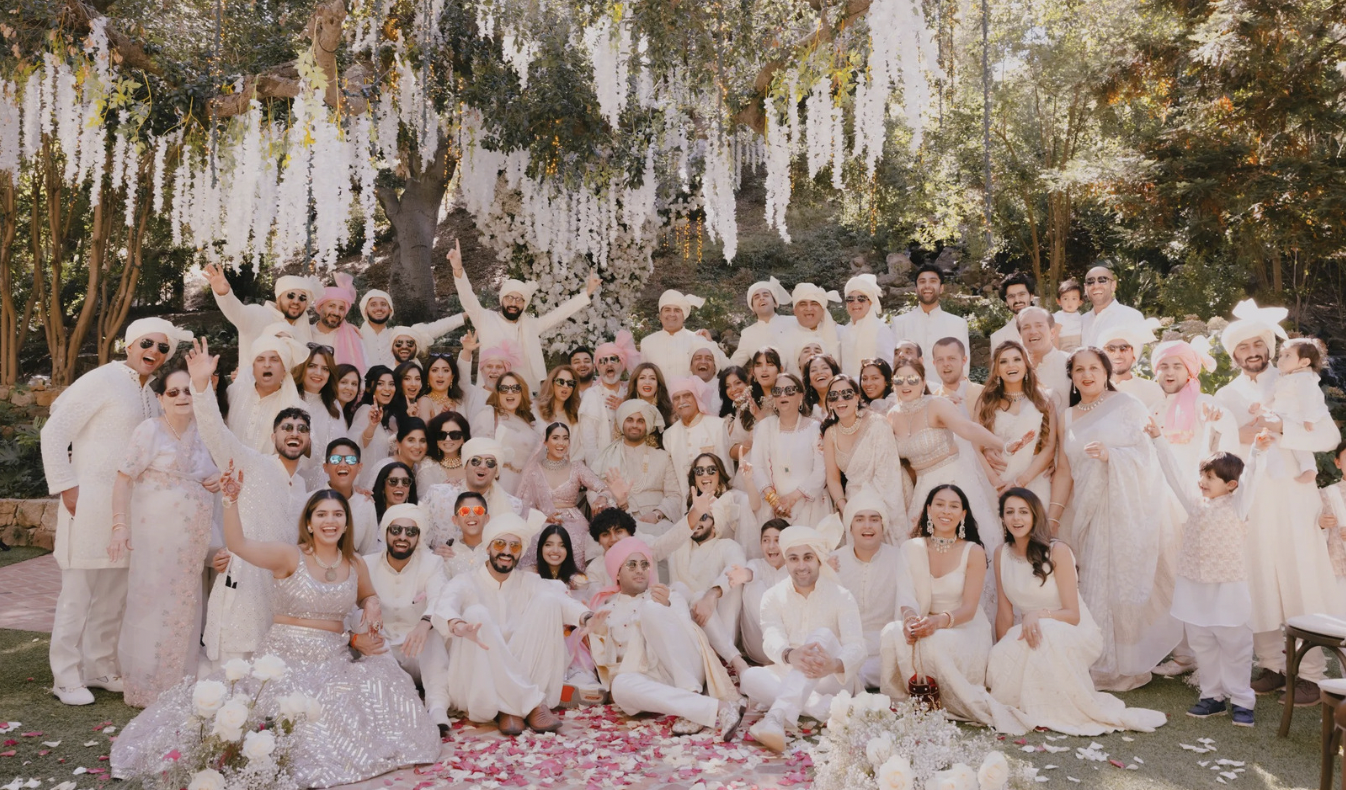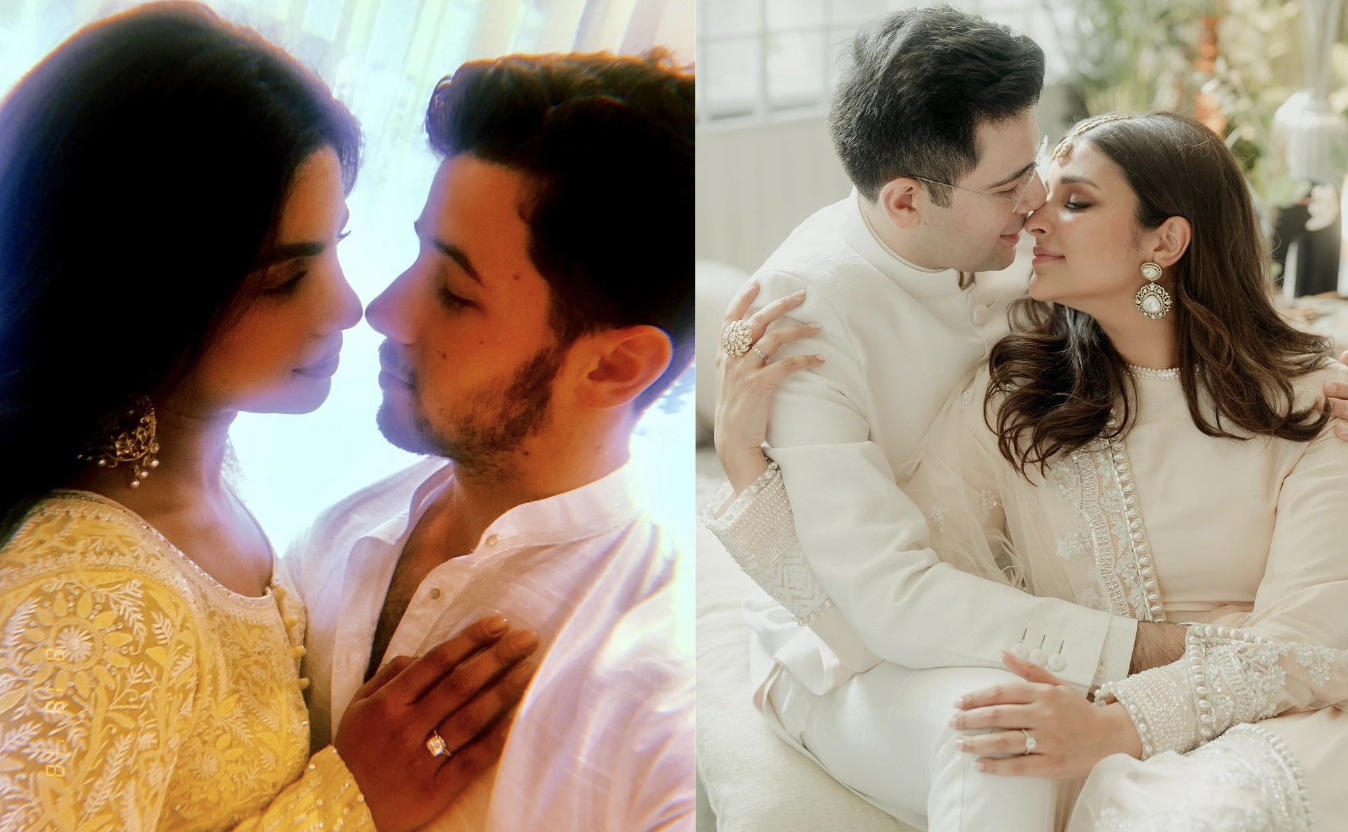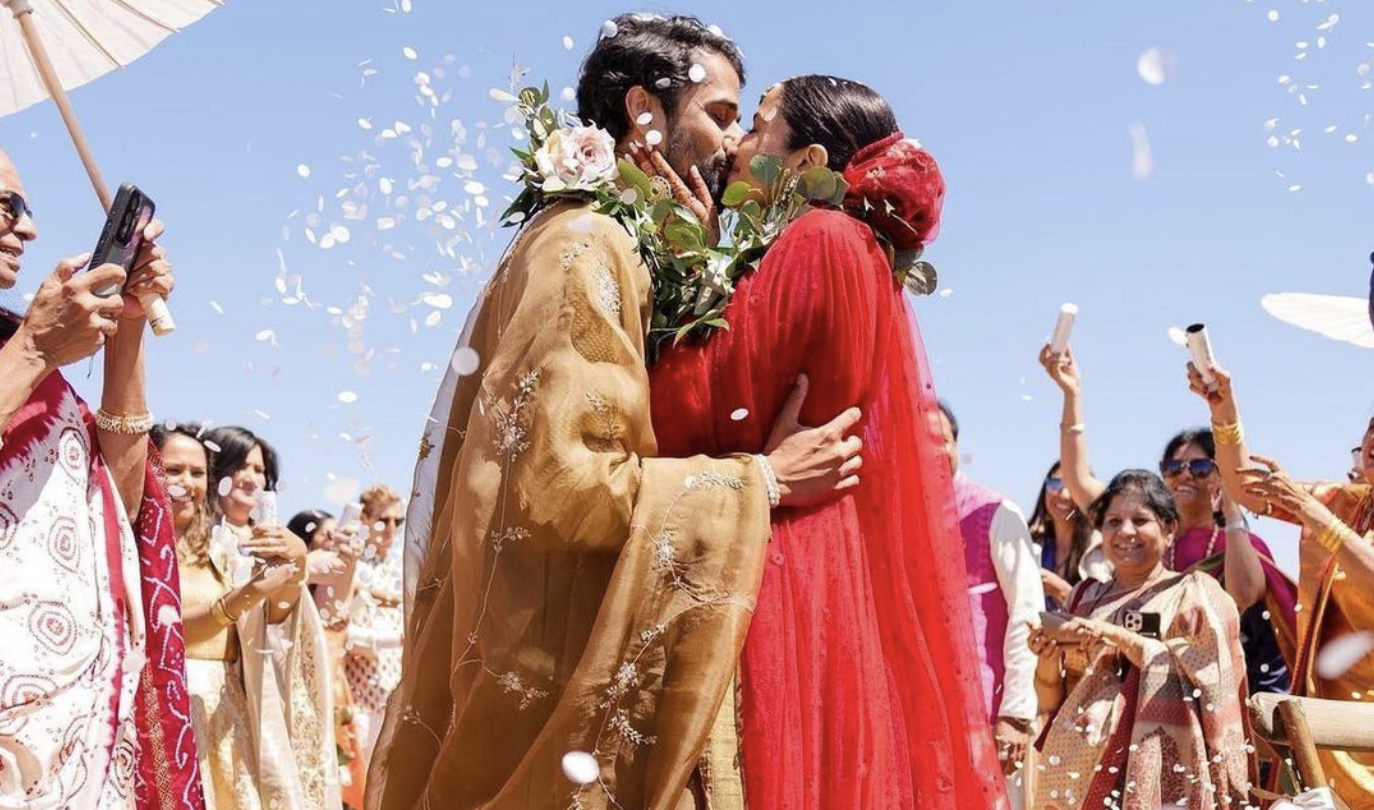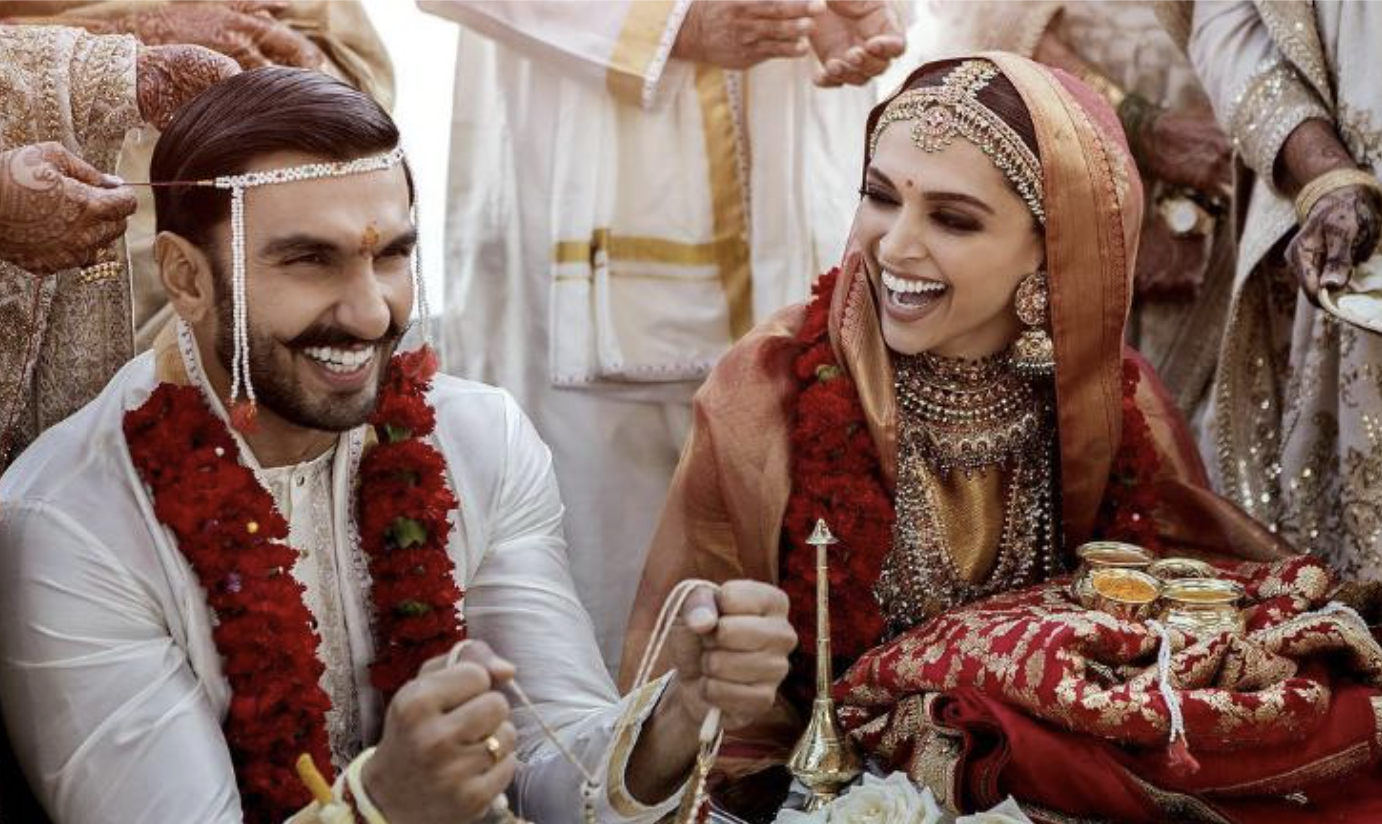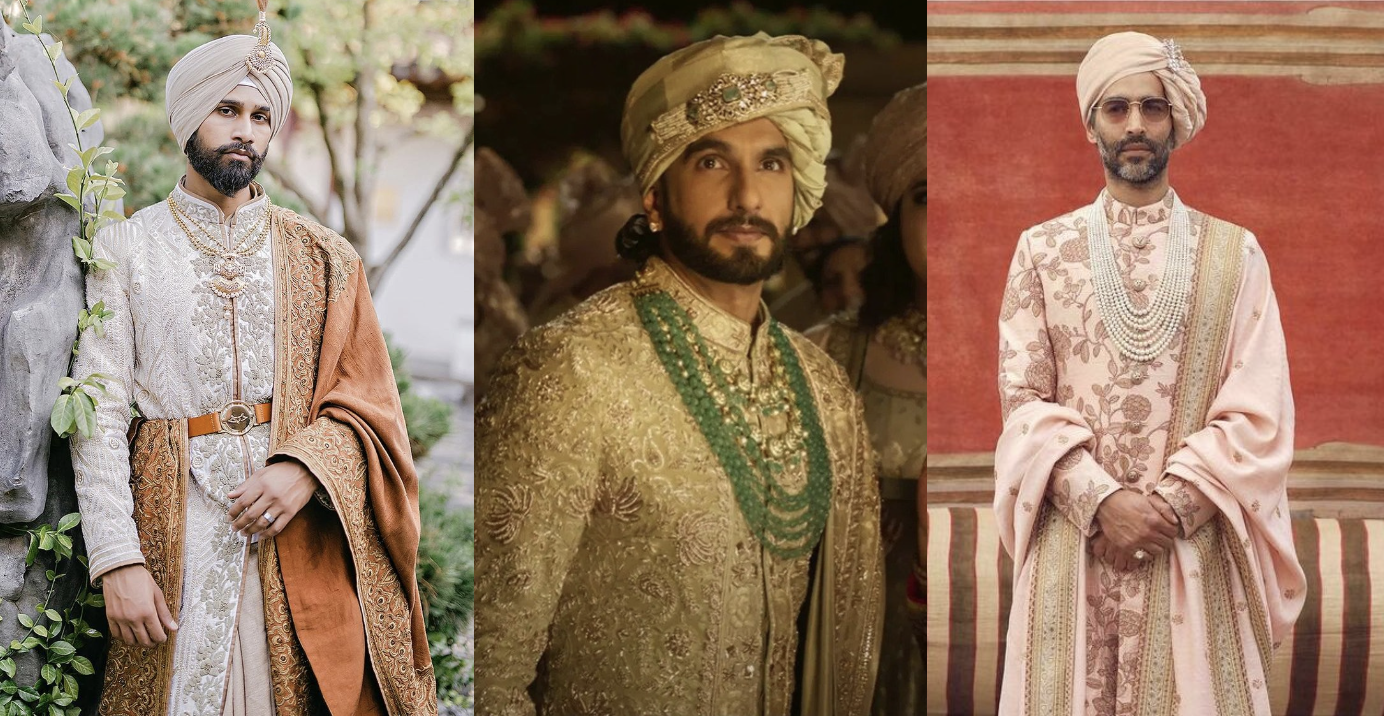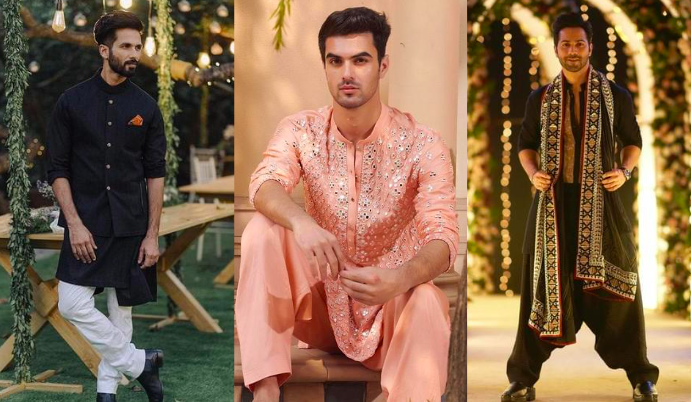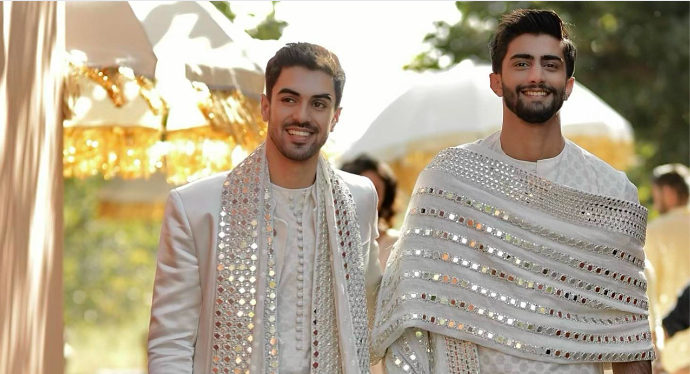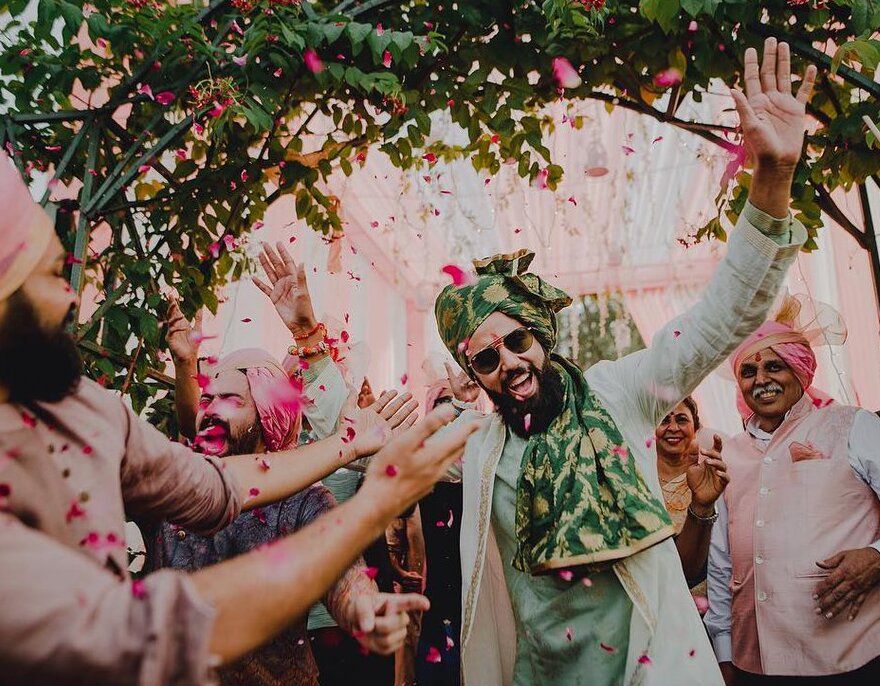Latest & Unique Groom Mehndi Designs You Will Totally Love
Groom Fashion SachiMehendi, also known as henna, is a form of body art that has been a traditional part of many cultures for centuries. It is a form of temporary tattoo that is created using a paste made from the powdered leaves of the henna plant, mixed with water or other liquids such as lemon juice or tea. The paste is applied to the skin using a cone or brush and left to dry for several hours, sometimes overnight. The dried paste is then scraped off, leaving behind a dark orange or brown stain on the skin. Mehendi has been used for centuries in the Middle East, North Africa, and South Asia for a variety of purposes.
In some cultures, it is considered a sign of good luck and is often applied to the hands and feet of the bride before her wedding day. It is believed to bring happiness, prosperity, and fertility to the bride and groom. In other cultures, mehendi is used to celebrate important festivals such as Eid and Diwali, or as a form of body art for special occasions such as birthdays or religious ceremonies. In addition to its cultural significance, mehendi has gained popularity as a fashion statement in recent years, with intricate designs becoming increasingly popular among both men and women. Mehendi designs can range from simple patterns of dots and lines to complex, detailed designs covering the entire hand or foot. Common motifs include flowers, leaves, paisleys, and geometric shapes. Mehendi has also become a popular form of body art for celebrities, with many incorporating it into their fashion and beauty routines. It is often seen on the red carpet and has been featured in fashion magazines and blogs.
Significance of Mehndi in Weddings
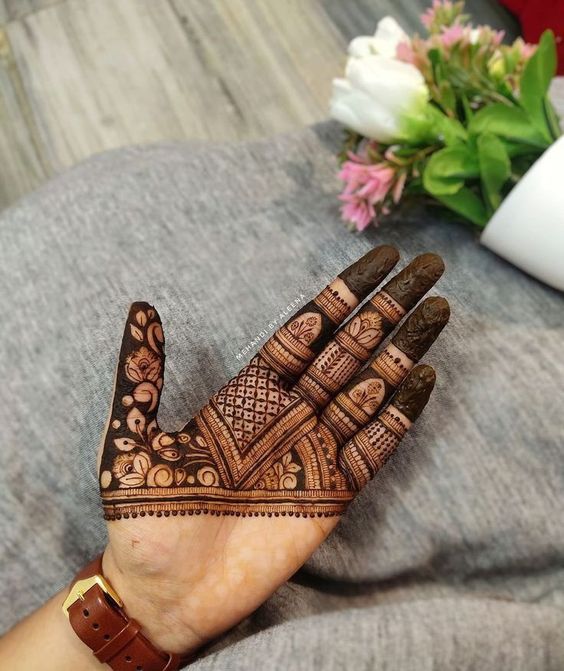
Mehendi, also known as henna, is an essential part of wedding celebrations in many cultures, particularly in South Asia and the Middle East. The mehendi ceremony is usually held one or two days before the wedding day and is an occasion where the bride and her female relatives and friends gather to celebrate the upcoming wedding. The significance of mehendi in weddings is both cultural and traditional. The intricate designs that are applied to the hands and feet of the bride and her female guests are believed to bring good luck and ward off evil spirits. The mehendi paste is made from crushed henna leaves and is applied in various patterns and designs, often incorporating symbols that represent fertility, good fortune, and love.
In many cultures, mehendi is considered an auspicious ritual that symbolizes the beginning of a new journey for the bride. It is also believed to strengthen the bond between the bride and her husband-to-be. The mehendi ceremony is often a joyous occasion filled with laughter, music, and dance. It is an opportunity for the bride to relax and enjoy the company of her friends and family before the hustle and bustle of the wedding day. In some traditions, the mehendi ceremony also has a deeper meaning. The intricate designs and patterns that are applied to the bride's hands and feet are believed to have a cooling effect on the body, which can help to calm the nerves and reduce stress. It is also believed that the mehendi ceremony helps to awaken the inner light within the bride, bringing a sense of calm and serenity that will stay with her throughout her married life. Apart from the cultural and traditional significance, the mehendi ceremony has also evolved into a fashion statement. The designs and patterns are often intricate and elaborate, incorporating the latest trends in fashion and design. In recent years, mehendi has become a popular form of body art, with people around the world using henna to decorate their bodies for special occasions or just for fun.
Why Grooms Apply Mehndi?
.jpeg)
Source: The Cheesecake Project
Mehendi, the art of applying henna on hands and feet, is an integral part of Indian culture and traditions. While it is mostly associated with brides and women, grooms are also known to apply mehendi during their wedding ceremonies. This ritual is called the “mehendi ceremony” or “mehendi night” and is widely popular in many parts of India. The groom's mehendi is usually less intricate and elaborate than the bride's mehendi, but it still holds significant importance in wedding celebrations. There are many reasons why grooms apply mehendi. One of the primary reasons is to bring good luck and ward off evil spirits. The intricate designs and patterns are believed to create a protective shield around the groom and protect him from negative energies. Mehendi has been used for centuries in various cultures as a way to protect oneself from evil spirits, and in the Indian context, this belief is deeply ingrained in the cultural psyche. The application of mehendi is seen as a way to ensure that the groom has a happy and prosperous married life, free from any negative influences.
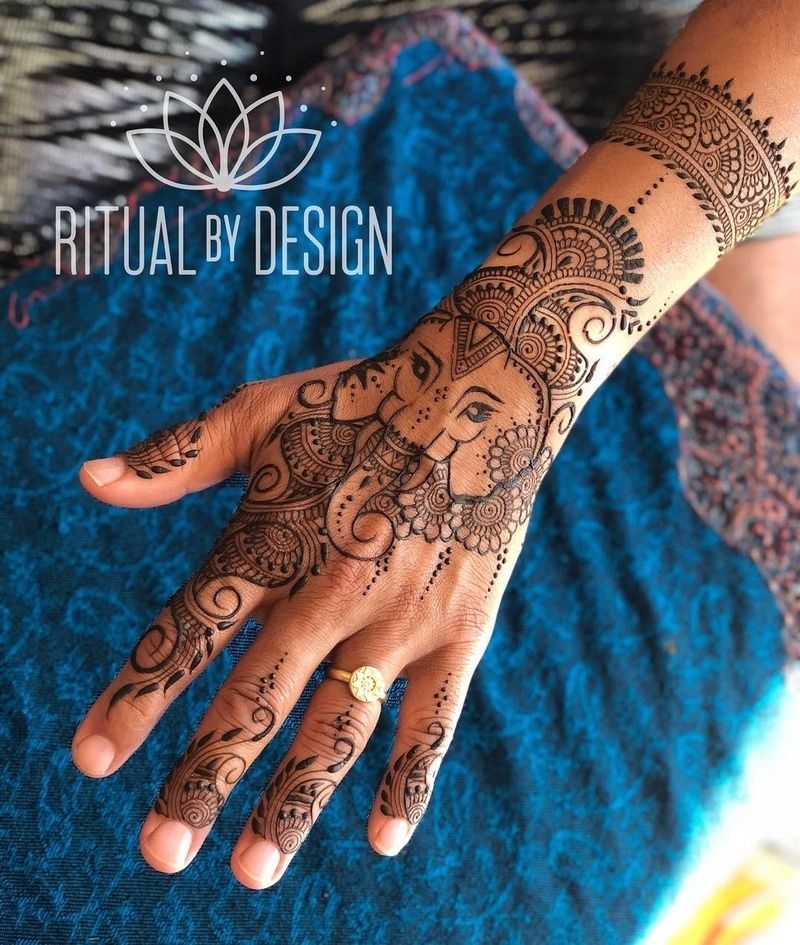
Source: Ritual By Design
Another reason why grooms apply mehendi is to honor tradition and cultural values. Mehendi has been an integral part of Indian culture for centuries, and it has evolved into a symbol of Indian identity and heritage. By applying mehendi, grooms are paying homage to their roots and ancestors and show respect for their cultural traditions. It is a way to connect with one's identity and showcase the richness and diversity of Indian culture. Apart from tradition and cultural values, applying mehendi is also seen as a way to enhance the groom's beauty and add to his overall appearance on the wedding day. Mehendi designs can be simple or elaborate, and they add a touch of elegance and sophistication to the groom's hands and feet. Mehendi is also a way to showcase the groom's creativity and personality, as he can choose his designs and patterns.
Popular Mehendi Designs for Grooms
The designs can range from traditional motifs to modern, abstract patterns, and they reflect the groom's style and taste. The mehendi ceremony is an opportunity for the groom's family and friends to come together and celebrate. It is a fun and festive event that allows everyone to bond and enjoy each other's company before the wedding day. Mehendi is usually applied on the groom's hands and feet by his close family members, and it is a way for them to show their love and support for him. In some communities, the mehendi ceremony is also a way for the groom's family to officially welcome the bride into their home and show their love and support for the couple.
1. Geometric Design
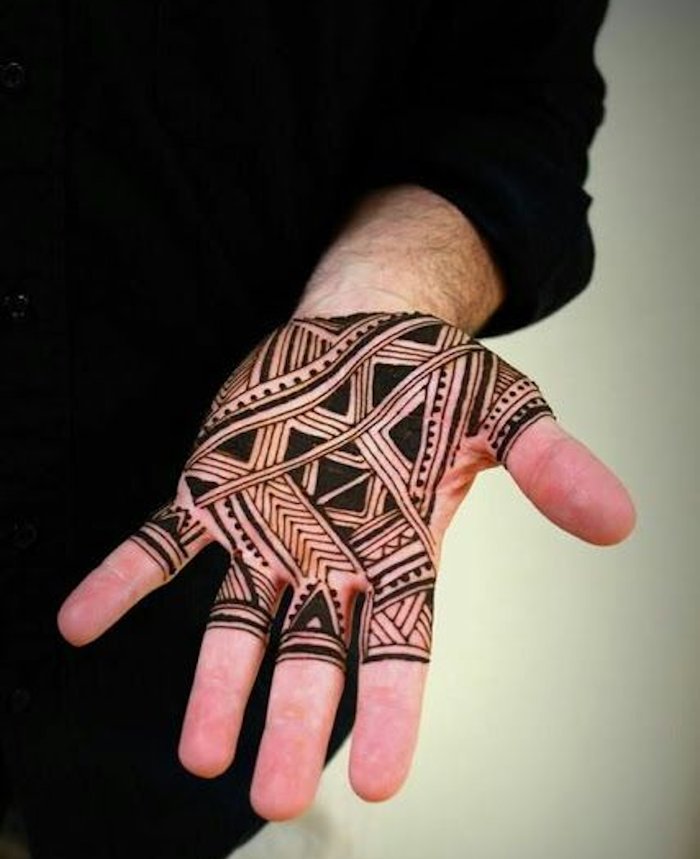
A popular design for grooms, geometric mehendi patterns involve a combination of squares, triangles, and lines. This design can be simple or complex, depending on the preference of the groom.
2. Peacock Design
![]()
Source: Burn Pixels
The peacock is a popular symbol in Indian culture and is often used in mehendi designs. The peacock design can be incorporated with other motifs to create an intricate and stunning design.
3. Minimalistic Design
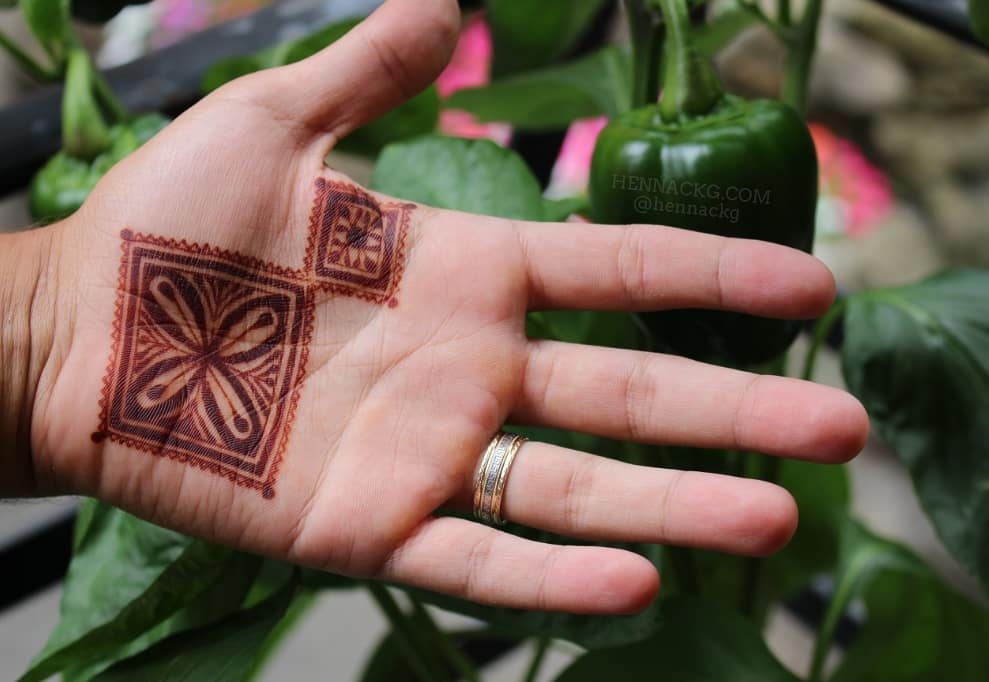
For grooms who prefer a simple and understated design, a minimalistic mehendi design can be an ideal choice. This design involves simple lines and dots that create a subtle yet elegant look.
4. Floral Design
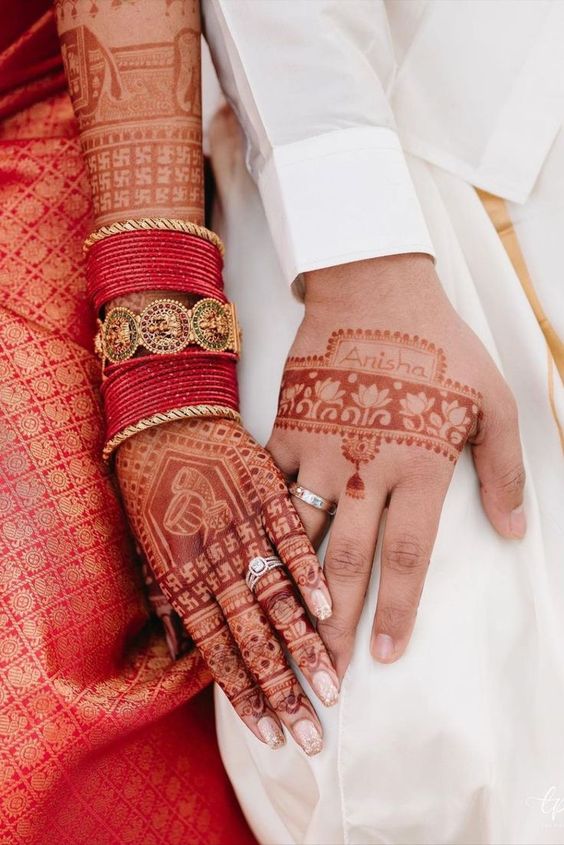
Flowers are a common motif in mehendi designs and can be used to create a stunning and intricate patterns. A floral mehendi design can include various types of flowers, such as roses, lotuses, and jasmine.
5. Mandala Design
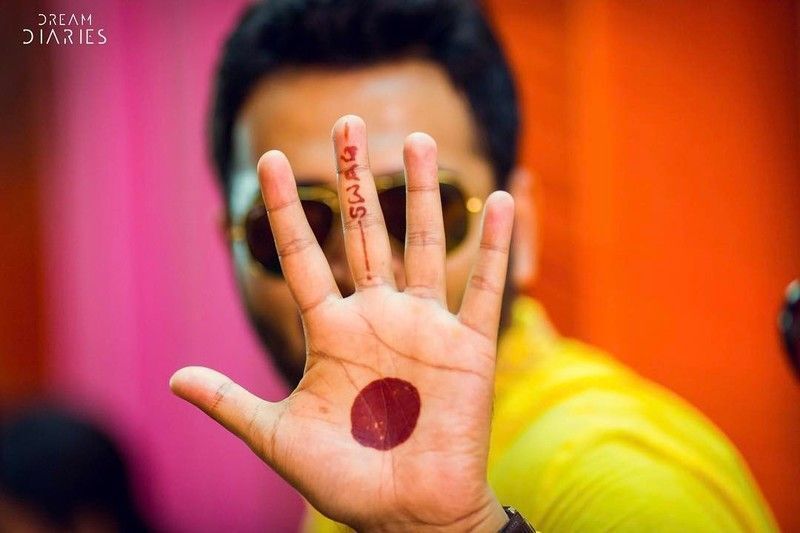
Source: Dream Diaries
A mandala is a circular design that symbolizes the universe. Mandala mehendi designs can be intricate and complex, and they often include geometric patterns and floral motifs.
6. Name Design
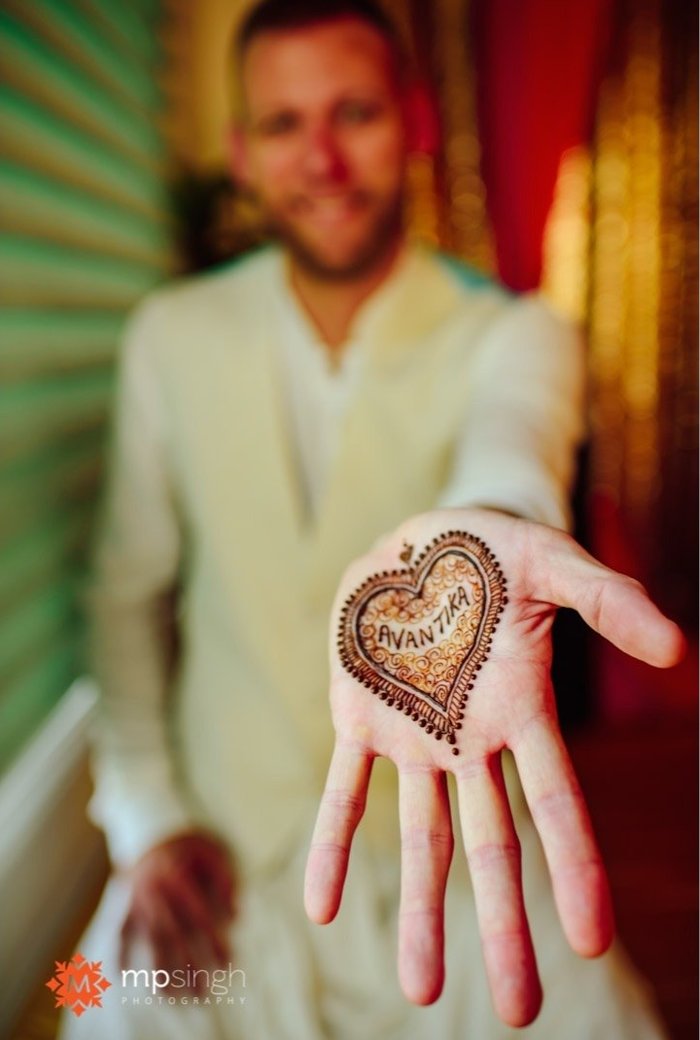
Source: MP Singh Photography
Some grooms prefer to have their partner's name or initials incorporated into their mehendi design. This design can be a simple or elaborate way to show love and dedication to their partner.
7. Religious Design
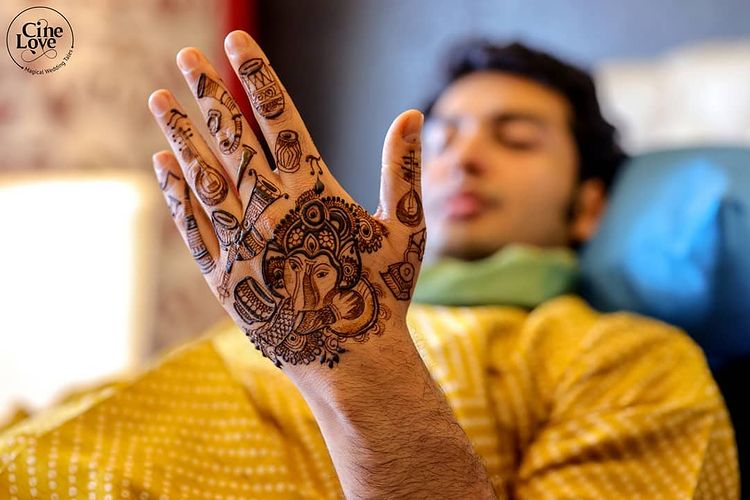
Source: Cinelove Productions
For deeply religious grooms, a mehendi design that includes religious symbols or motifs can be a meaningful choice. Designs can include symbols from Hinduism, Islam, or other religions.
8. Tribal Design
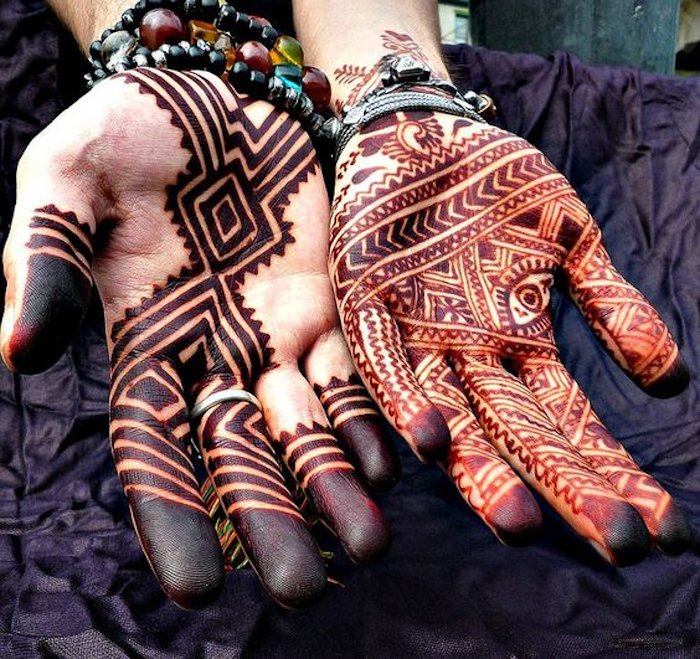
Tribal mehendi designs are often bold and feature thick lines and patterns. These designs can be simple or complex and are a great choice for grooms who want to make a statement with their mehendi.
9. Paisley Design
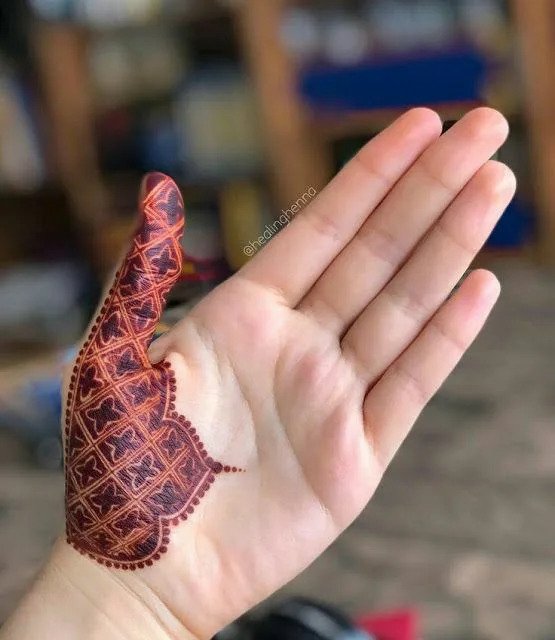
Source: Heding Henna
Paisley is a popular motif in mehendi designs and can be used to create an intricate and beautiful pattern. This design can be simple or complex, depending on the preference of the groom.
10. Animal Design
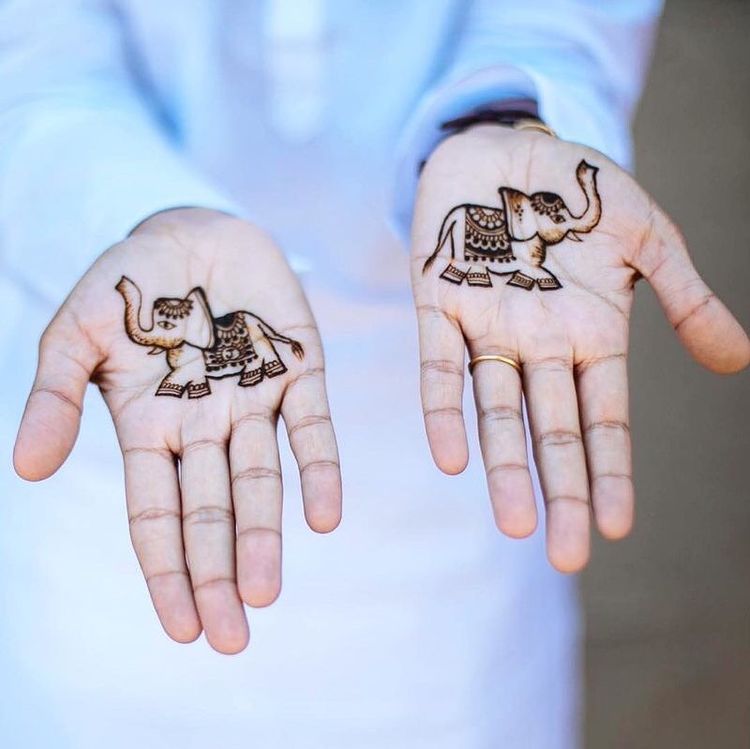
Source: Eichar Photography
Animals such as elephants, lions, and peacocks are often incorporated into mehendi designs. Animal designs can be a fun and playful way to add personality to the groom's mehendi.
11. Arabic Design
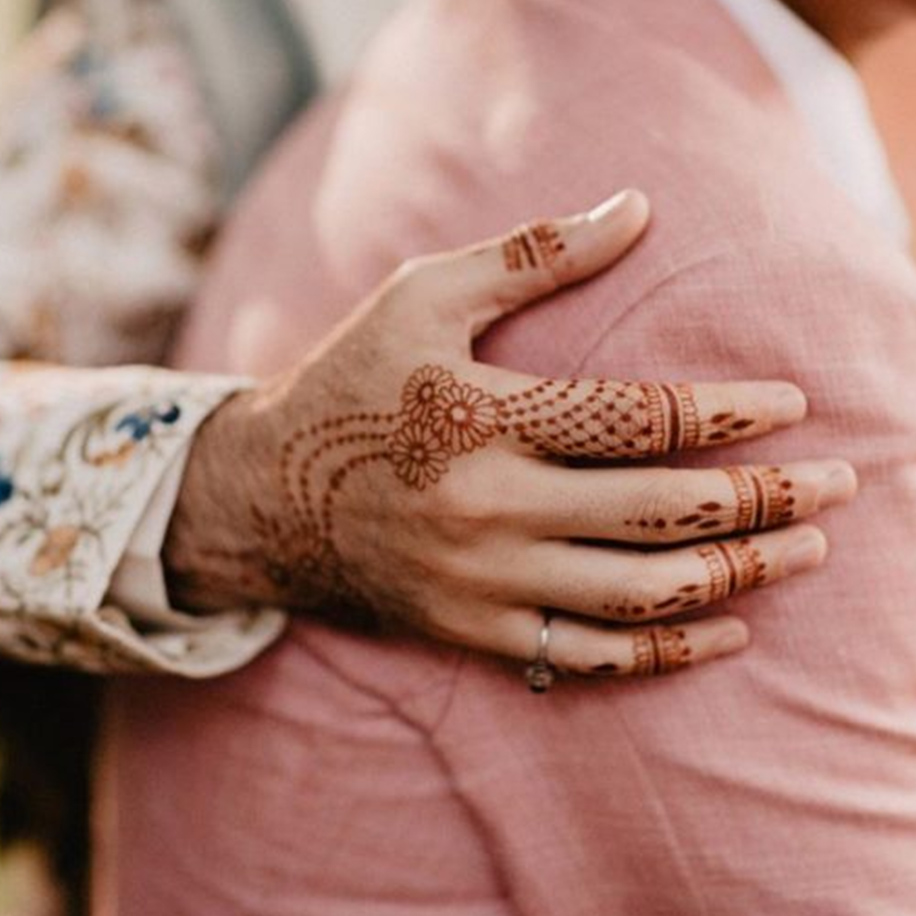
Arabic mehendi designs often feature bold lines and floral patterns. These designs can be intricate and complex, and they are a great choice for grooms who want a traditional and elegant mehendi design.
12. Modern Design
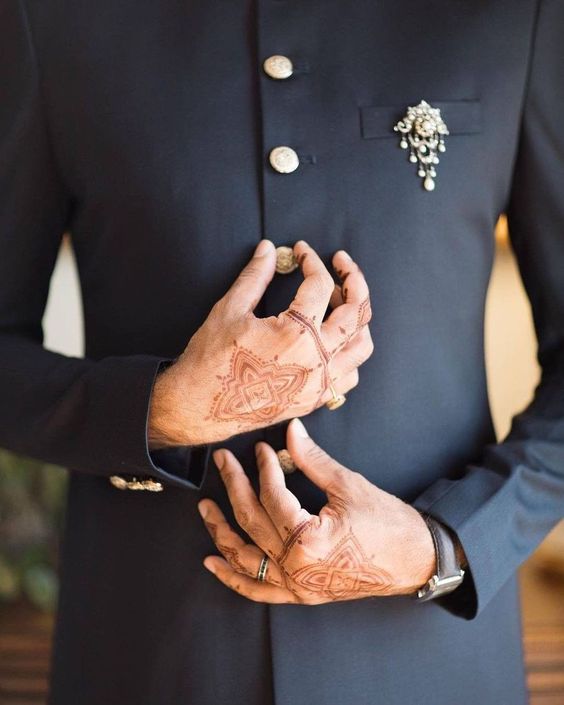
For grooms who want a unique and contemporary mehendi design, a modern design can be a great choice. These designs can incorporate various motifs, such as geometric shapes, abstract patterns, or even images of popular culture icons.
Conclusion
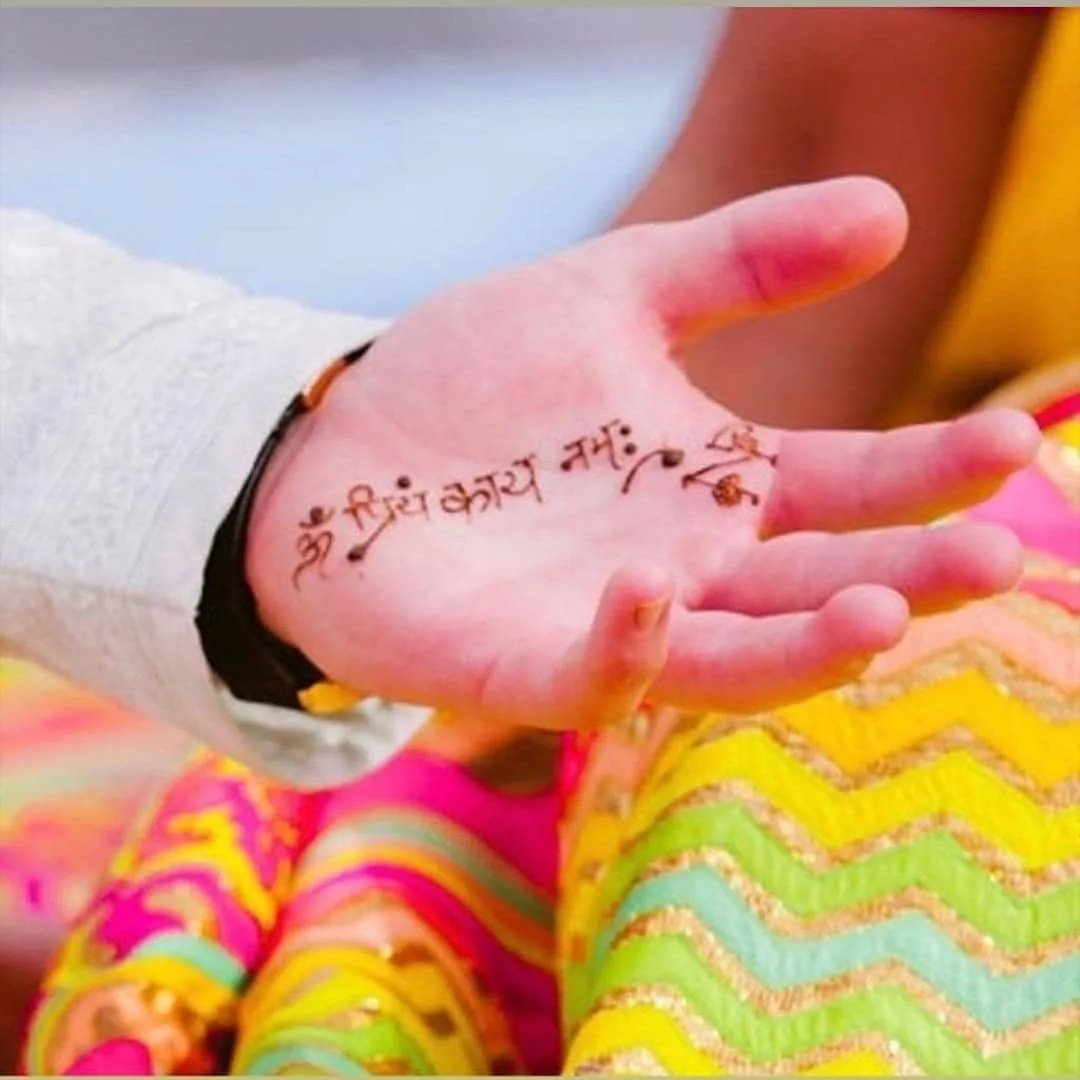
The practice of applying mehendi on the groom's hands and feet is a significant part of Indian wedding culture. It represents not only good luck and warding off evil spirits but also honoring traditions, enhancing one's appearance, showcasing creativity and personality, and bringing families and friends together to celebrate. With its various designs and patterns, grooms have the opportunity to express themselves and pay homage to their heritage. It is a way to connect with one's roots and identity and adds to the overall beauty and elegance of the wedding ceremony. The groom's mehendi is an important aspect of wedding celebrations and will continue to be a cherished tradition in Indian weddings.
Edited & Photo Sourced By: Neha Garg Ahuja


